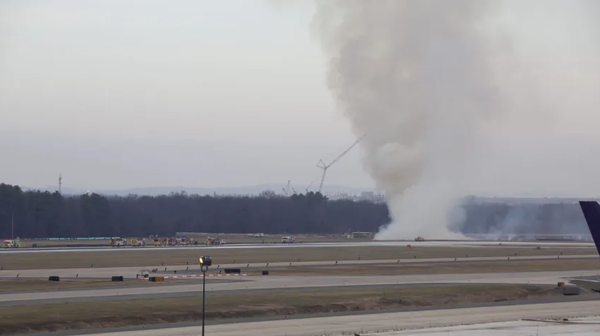Stratolaunch, a US-based aerospace company, announced the successful first powered flight of their new TA-1 Test vehicle, the first reusable hypersonic vehicle. The Talon-A test vehicle represents a major milestone in the reusability and sustainability efforts of the aerospace industry, which is trying to achieve reusable hypersonic technology. According to the company, the objectives of the test flight included "accomplishing safe air-launch release of the TA-1 vehicle, engine ignition, acceleration, sustained climb in altitude, and a controlled water landing".

The Inaugural Flight
The successful launch included the TA-1 reaching speeds nearing Mach 5 and collecting valuable data regarding the reusability of these vessels. The company used the Roc, a 500,000-pound (226,796 kilograms) aerial launch platform spanning football fields, to haul the TA-1 into the sky before the test. Air launching is common for the test of missiles and other rockets.
Stratolaunch, a Mojave, California-based startup founded in 2011 by Microsoft co-founder Paul Allen and Scaled Composites founder Burt Rutan, has been trying to advance the industry by researching and expanding research on hypersonic systems. Hypersonic refers to the speed of something being five times greater than the speed of sound.
Although this desire for speed is admirable, technology and research in this space are still in their infancy. Given the high speed of the devices, structural engineering and making these aircraft reusable has proven to be a large obstacle, to the chagrin of environmentalists and sustainability experts. The Talon testbeds used by Stratolauch are both reusable and cost-effective.

Stratolaunch CEO and President Dr. Zachary Krevor said about the launch:
"Today was a great day for the Stratolaunch team. I am extremely proud of their perseverance to reach this point. The successful outcome of the test is a direct result of the team's technical prowess and professionalism."
"While I can't share the specific altitude and speed TA-1 reached due to proprietary agreements with our customers, we are pleased to share that in addition to meeting all primary and customer objectives of the flight, we reached high supersonic speeds approaching Mach 5 and collected a great amount of data at an incredible value to our customers. Our goal with this flight was to continue our risk reduction approach for TA-2's first reusable flight and be steadfast on our commitment of delivering maximum value to our customers. We are excited to review the data from today's test and use it as we plan our next steps toward TA-2's first flight later this year."

The Increasing Use of Hypersonic Vehicles
The push for hypersonic vehicles and weapons has increased in recent years, with demand growing for their research and production. Hypersonic missiles move much quicker than traditional long- or short-range ballistic missiles, evading countermeasures at a much higher rate. In 2018, Russian President Vladimir Putin referred to hypersonic missiles as "invincible".
According to news articles, the Russian military suspectedly used a hypersonic missile for the first time in 2024 in Eastern Ukraine. The missile allegedly was the 3M22 Zircon, a Russian-produced technology used by the Russian Navy. Although no information has been confirmed on whether this was an air launch, Russian state media mention that it was previously deployed on a warship. According to the United States Congressional Budget Office, the US military has not fielded hypersonic weapons due to their price and impact capabilities.

However, as technology progresses, the desire for defense contractors in the research conducted by Stratolauch will be valuable. Estimates indicate that this emerging field is valued in the billions. Additionally, the speed of hypersonic missiles, which can fly over one mile a second, can provide technological advancements across many other sectors, including logistics and transit.
The Mojave Air and Space Port (MVH) in California has seen many technological, aerodynamic, and other engineering marvels over its lifespan, with the region being home to many companies testing out of the airfield. The need for speed is the region's next research focus. As sustainability efforts continue to expand in the aerospace industry, new research initiatives will excite those interested in decarbonizing aviation.
Engine Failure Forces United 777 Emergency Landing, Starts Brush Fire at Dulles Airport » Making a Stopover in Dubai? Discover How to Book a Yacht and Explore the City in a New Way » When Will the Boeing 777X Enter Service? Delays, Certification, and 2027 Outlook »
Comments (0)
Add Your Comment
SHARE
TAGS
NEWS Missile Hypersonic Future Innovation Technology Startup Stratolaunch California Test Flight Hypersonic AircraftRECENTLY PUBLISHED
 When Will the Boeing 777X Enter Service? Delays, Certification, and 2027 Outlook
The Boeing 777X was meant to be the crowning achievement of modern wide-body aviation: a folding-wing giant capable of carrying more passengers more efficiently than any twin-engine jet in history. Instead, the program has become a case study in aerospace endurance.
INFORMATIONAL
READ MORE »
When Will the Boeing 777X Enter Service? Delays, Certification, and 2027 Outlook
The Boeing 777X was meant to be the crowning achievement of modern wide-body aviation: a folding-wing giant capable of carrying more passengers more efficiently than any twin-engine jet in history. Instead, the program has become a case study in aerospace endurance.
INFORMATIONAL
READ MORE »
 Engine Failure Forces United 777 Emergency Landing, Starts Brush Fire at Dulles Airport
A United Airlines Boeing 777-200ER bound for Tokyo made a safe emergency landing at Washington Dulles International Airport (IAD) on Saturday afternoon after an engine failure shortly after takeoff ignited a brush fire near the runway. All 275 passengers and 15 crew members aboard United Flight 803 were reported uninjured.
NEWS
READ MORE »
Engine Failure Forces United 777 Emergency Landing, Starts Brush Fire at Dulles Airport
A United Airlines Boeing 777-200ER bound for Tokyo made a safe emergency landing at Washington Dulles International Airport (IAD) on Saturday afternoon after an engine failure shortly after takeoff ignited a brush fire near the runway. All 275 passengers and 15 crew members aboard United Flight 803 were reported uninjured.
NEWS
READ MORE »
 Making a Stopover in Dubai? Discover How to Book a Yacht and Explore the City in a New Way
Planning a stopover in Dubai? Learn how to book a yacht in Dubai and explore the city’s skyline, landmarks, and coastline from a private yacht.
INFORMATIONAL
READ MORE »
Making a Stopover in Dubai? Discover How to Book a Yacht and Explore the City in a New Way
Planning a stopover in Dubai? Learn how to book a yacht in Dubai and explore the city’s skyline, landmarks, and coastline from a private yacht.
INFORMATIONAL
READ MORE »



